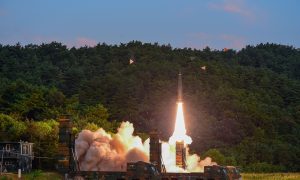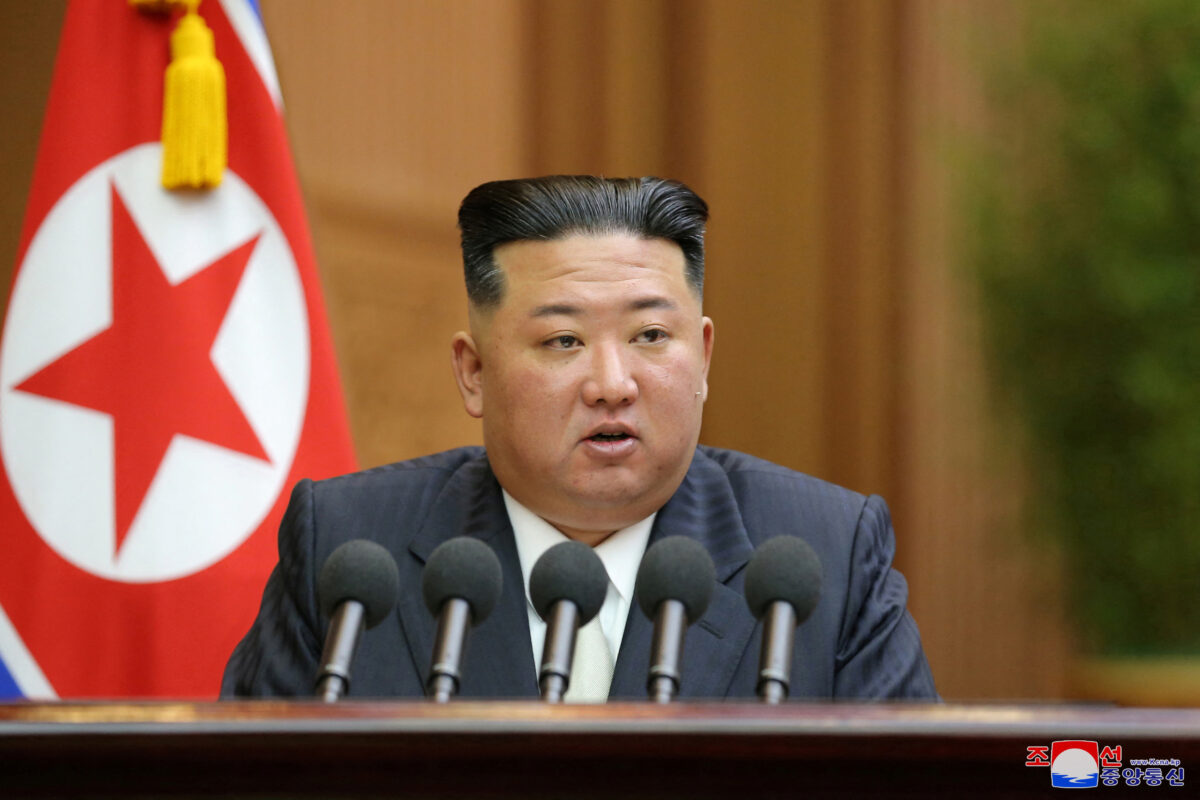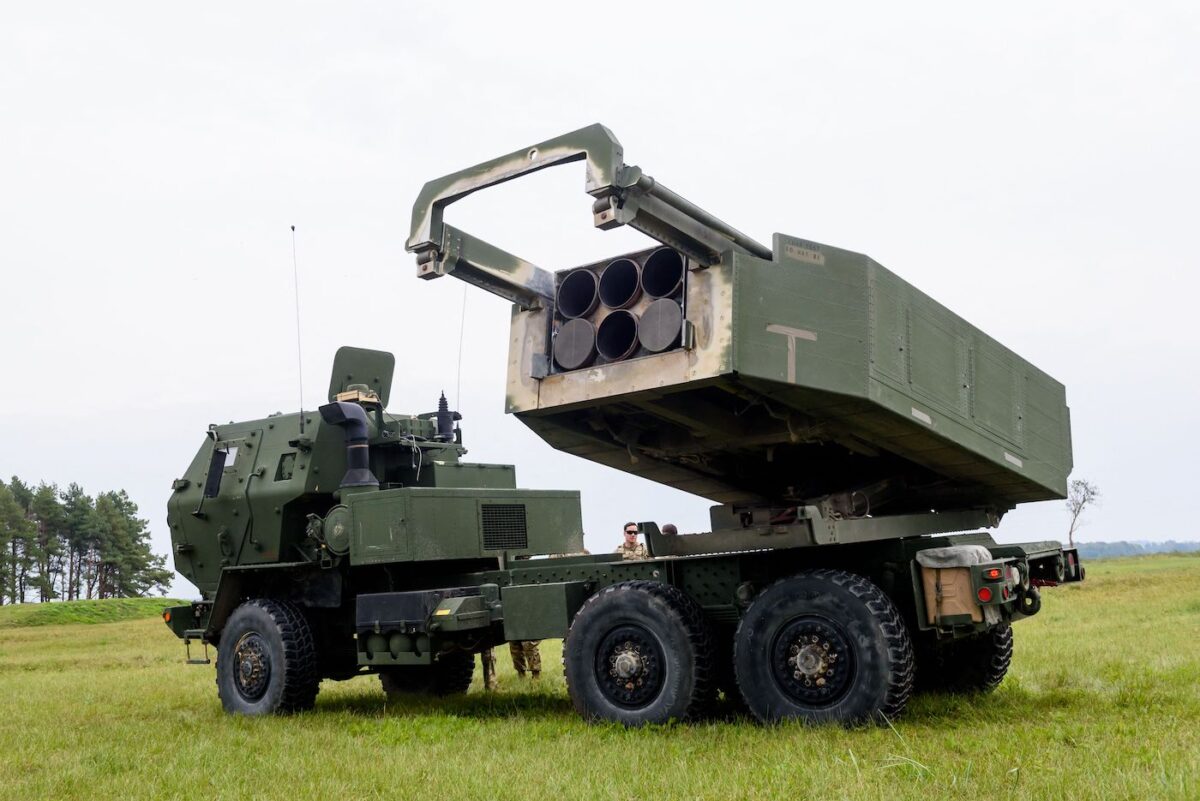South Koreans Want an Independent Nuclear Deterrent
CommentaryThe U.S. nuclear umbrella in Asia is failing. North Korea on Jan. 1 announced plans to “exponentially increase” its nuclear arsenal, including small-yield tactical nuclear weapons for the targeting of South Korea and intercontinental ballistic missile production for the targeting of the United States. The rogue country is walking its talk. On Jan. 1, it fired a ballistic missile toward the Sea of Japan. Last year, it fired a record quantity of missiles. In December, it sent drones into South Korean airspace, including one that reached a point about an hour’s drive from Seoul. Pyongyang has top cover from China and Russia, which can veto attempts by the United Nations to impose punishing sanctions for the North’s aggression. The United States talks up its policy of “extended deterrence,” in which Washington pledges to defend our allies up to and including through nuclear force. But some in South Korea question whether the United States would really go through with nuclear retaliation if North Korea or communist China attacked. The ability of Beijing and Pyongyang to hit the United States with nuclear weapons, including hypersonic missiles that evade anti-ballistic missile technologies, could radically decrease the willingness of any U.S. president to risk nuclear escalation. South Korean President Yoon Suk-yeol has a remedy. He called for the United States to demonstrate its extended deterrence through “nuclear sharing,” including joint nuclear planning and exercises. That could include training South Koreans to deploy U.S. nuclear weapons on South Korean planes. NATO countries engage in something similar, but non-NATO U.S. allies have been left out in the cold. On Jan. 2, the ice appeared to crack. Yoon said the two allies were considering joint nuclear exercises and planning because currently, extended deterrence was “falling short of convincing” South Koreans. North Korea’s leader Kim Jong Un addresses the Supreme People’s Assembly, North Korea’s parliament, which passed a law officially enshrining its nuclear weapons policies in Pyongyang, North Korea, on Sept. 8, 2022. (KCNA via Reuters) But the Biden administration has been throwing cold water on Yoon’s requests. The administration’s goal is a “non-nuclear Korean peninsula,” which would denuclearize North Korea but leave South Korea vulnerable to China. The United States has pursued this goal ineffectively since North Korea first exploded a nuclear bomb in 2006. Now, South Korea is calling time. President Yoon asked for either the reintroduction of U.S. tactical nuclear weapons in South Korea or more nuclear sharing. The U.S. State Department took a position against both options, likely fueling South Korean opinion in favor of an independent nuclear deterrent. A poll released on Jan. 2 found that 67 percent of South Koreans support acquiring their own nuclear weapons. The Biden administration is tone-deaf to this tectonic shift in South Korean politics. Instead of listening to our allies, which Biden claimed on the 2020 stump he would do, he tarnished the integrity of Yoon by denying U.S.-South Korean discussions over joint nuclear exercises. And Biden’s comment appears untrue, given that Yoon’s claim was confirmed by officials in both the United States and South Korea. Voice of America noted that many analysts believe the apparent contradiction reflects “behind-the-scenes tensions between the two allies over how best to involve South Korea in countering the North Korean threat.” One South Korean professor told Reuters, “Given growing voices for tactical nuclear weapons, Washington could try to give reassurances and send more nuclear assets when we want.” Ukraine is Exhibit A for those wondering whether the old nuclear umbrella would open when needed and what kind of holes would be discovered if it did. The failure of nuclear-armed democracies to effectively defend Ukraine’s population and infrastructure has been a tragedy not only for Ukrainians, but also for the perceived credibility of extended deterrence. To be sure, the United States and its allies support Ukraine with tens of billions of dollars worth of conventional weapons. But we have not allowed those weapons to be used against Russian territory. Deterrence, therefore, is nearly nonexistent, much less at U.S. nuclear levels. A High Mobility Artillery Rocket Systems (HIMARS) during the military exercise Namejs 2022 in Skede, Latvia, on Sept. 26, 2022. (Gints Ivuskans/AFP via Getty Images) Even nuclear sharing has limitations. Smart weapons can be deactivated or limited by their owners, as demonstrated most recently in the geographic limitation of HIMARS missiles delivered to Ukraine, and the alleged kill switches on French Exocet missiles used by Argentina as early as the 1980s. Russia, China, and North Korea will understand these likely limitations put on any U.S. nuclear weapons shared with allies, so such sharing will only marginally improve extended deterre

Commentary
The U.S. nuclear umbrella in Asia is failing. North Korea on Jan. 1 announced plans to “exponentially increase” its nuclear arsenal, including small-yield tactical nuclear weapons for the targeting of South Korea and intercontinental ballistic missile production for the targeting of the United States.
The rogue country is walking its talk. On Jan. 1, it fired a ballistic missile toward the Sea of Japan. Last year, it fired a record quantity of missiles. In December, it sent drones into South Korean airspace, including one that reached a point about an hour’s drive from Seoul.
Pyongyang has top cover from China and Russia, which can veto attempts by the United Nations to impose punishing sanctions for the North’s aggression.
The United States talks up its policy of “extended deterrence,” in which Washington pledges to defend our allies up to and including through nuclear force. But some in South Korea question whether the United States would really go through with nuclear retaliation if North Korea or communist China attacked.
The ability of Beijing and Pyongyang to hit the United States with nuclear weapons, including hypersonic missiles that evade anti-ballistic missile technologies, could radically decrease the willingness of any U.S. president to risk nuclear escalation.
South Korean President Yoon Suk-yeol has a remedy. He called for the United States to demonstrate its extended deterrence through “nuclear sharing,” including joint nuclear planning and exercises. That could include training South Koreans to deploy U.S. nuclear weapons on South Korean planes.
NATO countries engage in something similar, but non-NATO U.S. allies have been left out in the cold.
On Jan. 2, the ice appeared to crack. Yoon said the two allies were considering joint nuclear exercises and planning because currently, extended deterrence was “falling short of convincing” South Koreans.

But the Biden administration has been throwing cold water on Yoon’s requests. The administration’s goal is a “non-nuclear Korean peninsula,” which would denuclearize North Korea but leave South Korea vulnerable to China. The United States has pursued this goal ineffectively since North Korea first exploded a nuclear bomb in 2006.
Now, South Korea is calling time.
President Yoon asked for either the reintroduction of U.S. tactical nuclear weapons in South Korea or more nuclear sharing. The U.S. State Department took a position against both options, likely fueling South Korean opinion in favor of an independent nuclear deterrent. A poll released on Jan. 2 found that 67 percent of South Koreans support acquiring their own nuclear weapons.
The Biden administration is tone-deaf to this tectonic shift in South Korean politics.
Instead of listening to our allies, which Biden claimed on the 2020 stump he would do, he tarnished the integrity of Yoon by denying U.S.-South Korean discussions over joint nuclear exercises. And Biden’s comment appears untrue, given that Yoon’s claim was confirmed by officials in both the United States and South Korea.
Voice of America noted that many analysts believe the apparent contradiction reflects “behind-the-scenes tensions between the two allies over how best to involve South Korea in countering the North Korean threat.”
One South Korean professor told Reuters, “Given growing voices for tactical nuclear weapons, Washington could try to give reassurances and send more nuclear assets when we want.”
Ukraine is Exhibit A for those wondering whether the old nuclear umbrella would open when needed and what kind of holes would be discovered if it did.
The failure of nuclear-armed democracies to effectively defend Ukraine’s population and infrastructure has been a tragedy not only for Ukrainians, but also for the perceived credibility of extended deterrence.
To be sure, the United States and its allies support Ukraine with tens of billions of dollars worth of conventional weapons. But we have not allowed those weapons to be used against Russian territory. Deterrence, therefore, is nearly nonexistent, much less at U.S. nuclear levels.

Even nuclear sharing has limitations. Smart weapons can be deactivated or limited by their owners, as demonstrated most recently in the geographic limitation of HIMARS missiles delivered to Ukraine, and the alleged kill switches on French Exocet missiles used by Argentina as early as the 1980s.
Russia, China, and North Korea will understand these likely limitations put on any U.S. nuclear weapons shared with allies, so such sharing will only marginally improve extended deterrence.
What would more thoroughly increase deterrence is what might be called “distributed deterrence,” which goes beyond extended deterrence to endorse an independent nuclear deterrent capability for democracies under threat, including Ukraine, Georgia, South Korea, Japan, Taiwan, and Australia.
This is not a new idea. Some nuclear weapons theorists, including the realist political theorist Kenneth Waltz, have argued since the 1990s that distributing nuclear deterrence would more effectively secure international peace.
With the failure of the nuclear Non-Proliferation Treaty (NPT) to restrain aggressive dictators such as Russia, China, North Korea, and Iran from pursuing hypersonic nuclear missiles, the world must reconsider the treaty and its potential disutility in restraining democracies from defending themselves.
A better option would be an international norm that simultaneously stops unaccountable dictators from possessing nuclear weapons and supports democracies such as South Korea in any attempts to acquire such a deterrent.
Views expressed in this article are the opinions of the author and do not necessarily reflect the views of The Epoch Times.












